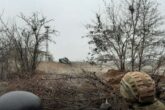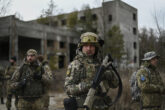May 26, 2023
A Nuclear Collision Course in South Asia
In the summer of 2021, the world learned that China was dramatically expanding its nuclear arsenal. Satellite imagery showed Beijing building as many as 300 new ballistic missile silos. The Pentagon now projects that China’s stockpile of nuclear weapons, which had for years rested in the low hundreds, could spike to 1,500 warheads by 2035, confirming suspicions that Beijing has decided to join Russia and the United States in the front rank of nuclear powers.
The prospects for sustaining this era of minimum deterrence appear increasingly shaky.
Security experts are only beginning to sort through the implications of China’s nuclear breakout. They would do well to consider Ashley Tellis’s new book, Striking Asymmetries, which assesses the implications of Beijing’s actions from the vantage point of the rivalries between South Asia’s three nuclear powers: China, India, and Pakistan. In a work that should be required reading for senior political and military leaders, Tellis presents a compelling case why this tripolar nuclear system, which has for decades remained remarkably stable, may be on the verge of becoming far more dangerous.
Read the full article from Foreign Affairs.
More from CNAS
-
Chinese Maker of Bitcoin-Mining Machines Is a Security Threat, Says Expert
Bloomberg News reports that a Chinese manufacturer, Bitmain Technologies Ltd, that sells most of the world’s Bitcoin-mining machines — including 16,000 of them to a venture ba...
By David Feith
-
Defense / Transatlantic Security
When Defense Becomes Destruction: Austria-Hungary’s Mistake and Ukraine’s RiskThis article was originally posted on War on the Rocks. The southeastern Polish city of Przemyśl, with its elegant 19th century Habsburg-era train station, remains one of the ...
By Franz-Stefan Gady
-
Defense / Transatlantic Security
Ukraine’s Catch-22 MomentThis article was originally published in the Financial Times. In Joseph Heller’s wartime classic, Catch-22, the protagonist Yossarian seeks out the US army surgeon Doc Daneeka...
By Franz-Stefan Gady
-
Indo-Pacific Security / Energy, Economics & Security
North Korea’s Provocations, Power Plays, and Shifting AlliancesTensions on the Korean Peninsula have reached a new and dangerous threshold. President Lee Jae Myung is warning of a real risk of accidental military clashes, as the situation...
By Dr. Go Myong-Hyun




